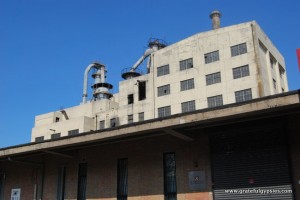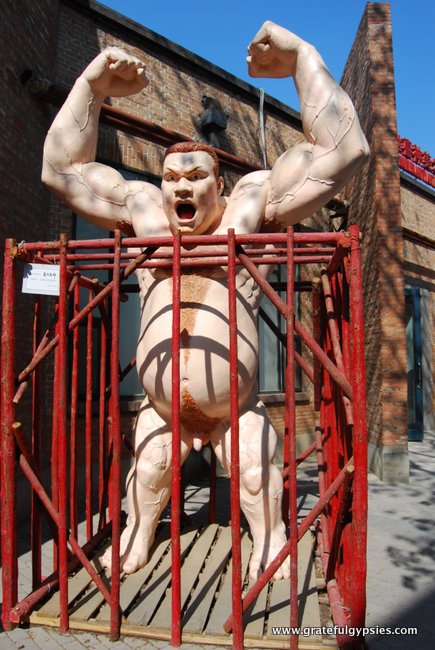From Communist Factory to Art Haven – 798 Posted by sasha on Aug 16, 2014 in Uncategorized
If you love art, then you’d better get to Beijing to check out the 798 Art District (798艺术区 – qī jiǔ bā yì shù qū). Housed amongst old decommissioned military factories, the area has an interesting back story to say the least. Back in the early 1950s, the newly formed People’s Republic of China teamed up with the Soviet Union and East Germany (Communist BFFs!) to get the country’s industry rolling. German experts came to China to work on this massive project, and equipment was shipped along the Trans-Siberian railway. Production began in 1957, and tens of thousands of people moved in to join “work units” (单位 – dān wèi) to make a variety of military and civilian equipment in the first factory – 718. Although much of the country was in dire straits during the tumultuous years of the Great Leap Forward, workers here enjoyed some of the best living/working conditions – cheap housing, athletics, clubs, entertainment, and more. Eventually 718 was split into several smaller components, all of which were given numerical names in the 700s. One was called 798, and that’s where the modern name comes from.
During the reforms of the 1980s when Deng Xiaoping was in power, the factories went into decline. Government funding disappeared, workers started getting laid off, and eventually they all closed down. The buildings sat abandoned for a while, until the artistic community in the city found itself looking for a new home. More and more artists and designers started moving in and opening studios and galleries here, and the area experienced a very interesting revival. You won’t find any workers pumping out military equipment and reciting Maoist slogans these days, but you will find plenty of tourists and photographers wandering around the old factories, checking out the various galleries and displays. In an ode to its past, some of those old Maoist slogans that were painted on the ceiling to motivate workers were kept up.
As new galleries and exhibits are always coming to 798, you can keep coming back here and find something new every time. It’s a great way to spend a day, as there are also tons of cafes, restaurants, and quirky little shops to keep you busy. Here are a few more photos to give you an idea of what it’s like exploring 798:
If you want to see more, just check out these videos on the art district that we put up a few years ago:

Build vocabulary, practice pronunciation, and more with Transparent Language Online. Available anytime, anywhere, on any device.
About the Author: sasha
Sasha is an English teacher, writer, photographer, and videographer from the great state of Michigan. Upon graduating from Michigan State University, he moved to China and spent 5+ years living, working, studying, and traveling there. He also studied Indonesian Language & Culture in Bali for a year. He and his wife run the travel blog Grateful Gypsies, and they're currently trying the digital nomad lifestyle across Latin America.


















Leave a comment: